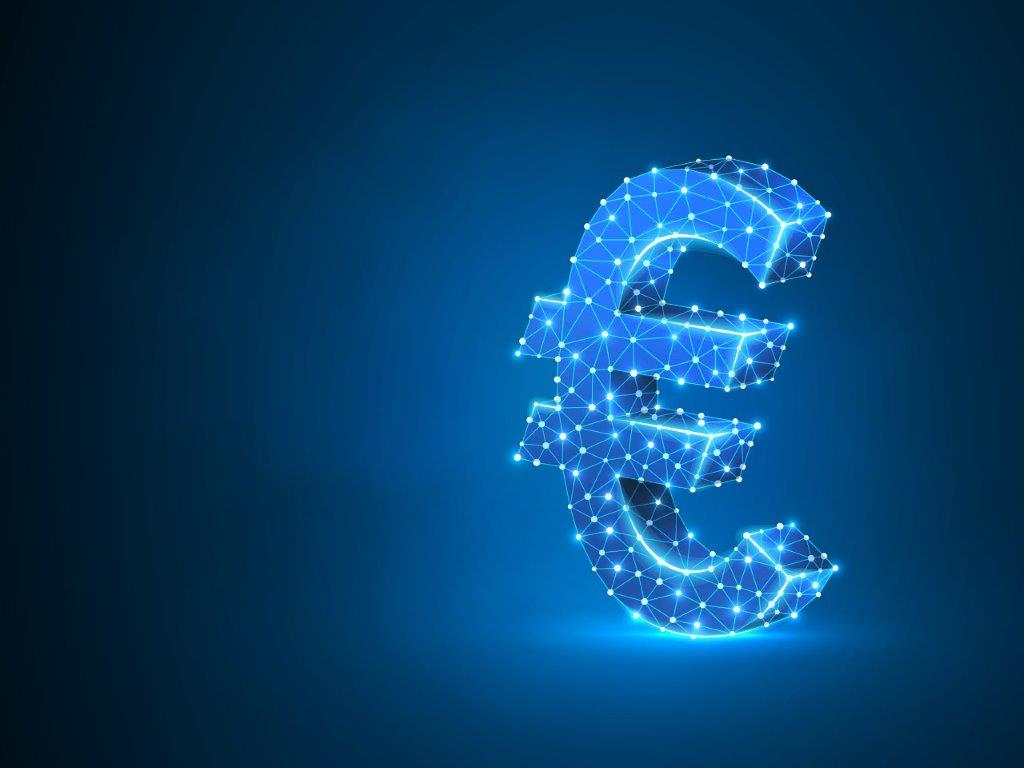Digital euro

Related topics
Bankingdate: 01/10/2021
By Céu Pereira and Laszlo Butt
Digitalisation is rapidly spreading to every corner of people’s lives and transforming the way we do many things. In this context, the ECB and the European Commission have begun examining whether to create a digital euro. So, how would a digital euro work? And what benefits could it bring individuals and businesses in the EU?
What is a digital euro?
A digital euro would be a central bank ‘liability’ in digital form, to be used by individuals and businesses for everyday payments. It would complement the private electronic payments (e.g. card) and cash (i.e. banknotes and coins) that are currently used, but it would not replace them. Different designs are possible (account-based or token-based, for example, or compatible with programmable payments – which are payments that are automatically executed after certain conditions are met). And these could coexist. Authorities all over the world are looking into central bank digital currency (CBDC) for a number of reasons. For one thing, the use of cash is in decline. In addition, there is the ever-increasing digitalisation of the world’s economies. Finally, there is the emergence of global stable coins (e.g. Libra) and/or foreign CBDCs (e.g. in China) that could represent a threat to monetary sovereignty.
What can the digital euro offer?
From the European Commission’s perspective, a digital euro should support its political agenda on strategic autonomy and digitalisation and strengthen the international role of the euro. A digital euro could spur innovation in the financial system and beyond in a digitalised economy. If designed right, a digital euro could potentially support automated machine-to-machine payments, streaming and micro-payments that support innovative technologies such as self-driving cars. This is important for the competitiveness of European industry, because payment automation and streaming are vital drivers of efficiency and lower cost. Furthermore, a digital euro could be combined with the future European digital identity and together become the foundations for the European digital economy and new and innovative digital financial services.
Europeans generally could benefit from a digital euro too. A higher protection of individuals’ data, which would stay in the EU and would be better controlled, would help avoid undesired commercial use of people’s information. With the decrease in the use of cash, payment solutions are needed that are free, simple and available for all social groups in a digitalised economy. A well-designed digital euro will allow all EU citizens to use it as easily as they use cash today.
A digital euro could also successfully compete with private digital assets like stablecoins or foreign CBDCs and support the euro area’s monetary autonomy. Finally, the digital euro as an instrument could strengthen the international role of the euro. A digital euro accessible to non-euro area residents could facilitate cross-border transactions and increase foreign investors’ demand for euro assets beyond the euro area.
The Commission-ECB joint work
The benefits of the digital euro come with many challenges, risks and potential undesired ‘side effects’. The key risks include
- Potential shift from deposits to digital euro weakening financial intermediation
- Reduced transmission of monetary policy
- Use of digital euro for money laundering and terrorist financing
- Data and IT security breaches
- Undesired international capital movements
- Reduction in private innovation in payments
- Low use by certain people, especially vulnerable ones
In their analysis, the Commission and the ECB need to factor in the implications of a digital euro for a wide range of EU objectives and policies. In January 2021, the Commission and the ECB began a joint review – at technical level – of a broad range of policy, legal and technical questions related to the potential introduction of a digital euro.
Where do we stand and what are the next steps?
On 14 July 2021, the European Central Bank (ECB) gave the green light to the digital euro project. This means that an investigation into the digital euro will start in October, and last between two and three years. At a technical level, the European Commission and the ECB have already been working on various issues related to the digital euro. With this work, they aim to ensure that any eventual design can fulfil wide policy objectives and that EU legislation supports its introduction.
In the rest of the investigation phase of the project, the joint technical work will continue to ensure that critical design decisions support the ECB’s and Commission policies and that risks are mitigated.
If the project goes smoothly, the Commission will adopt a regulation in early 2023, which would establish the digital euro and set out key design features. The ECB could then move to the implementation phase, which would last about two more years.

Céu Pereira is team leader for retail payments in DG FISMA and coordinating the European Commission’s work on a digital euro

Laszlo Butt is a policy officer working on digital finance in DG FISMA and coordinating the European Commission’s work on a digital euro
